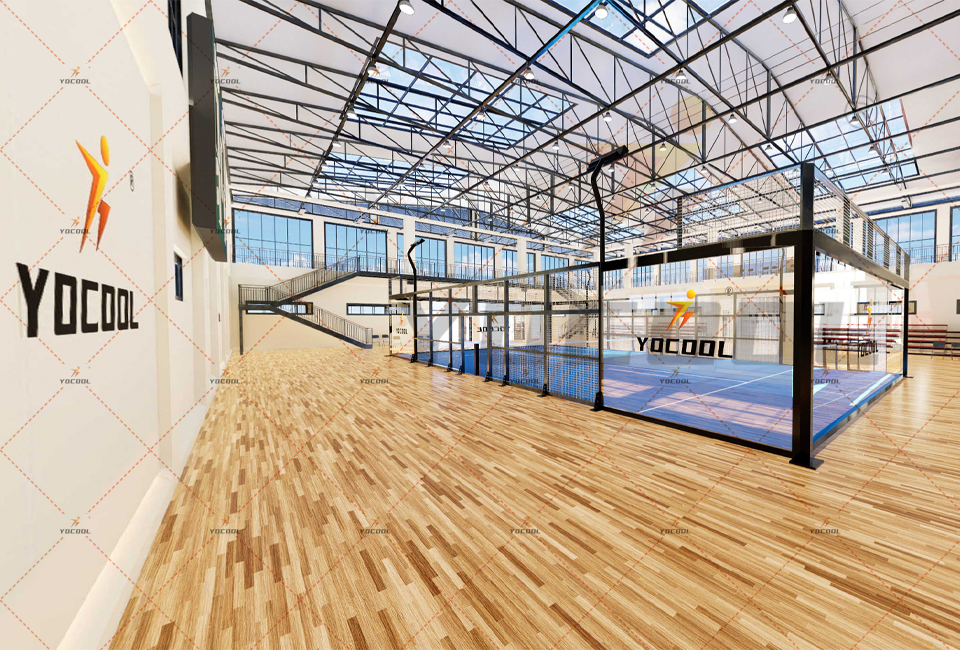

The Rise of Paddle Tennis
Paddle tennis, a dynamic and engaging sport, has gained significant popularity in recent years, captivating fans and athletes alike. This unique sport combines elements from traditional tennis and other racquet sports, creating an enjoyable and accessible experience for players of all ages and skill levels. In this article, we will explore the essence of paddle tennis, its rules, equipment, and its growing global appeal.
A Brief History
Paddle tennis originated in the United States in the early 20th century, but it has undergone various adaptations and transformations over the years. The modern version of the game, often referred to as paddle, is now played worldwide, with substantial growth in Europe and Latin America. Unlike traditional tennis, which is played on a larger court, paddle tennis is played on a smaller, enclosed space, allowing for faster gameplay and a more intimate spectator experience.
The Court and Equipment
Paddle tennis courts are typically about one-third the size of a traditional tennis court, measuring 20 meters long and 10 meters wide. The layout includes walls that players can use strategically to return the ball, adding an exciting dynamic to rallies. The paddles used in paddle tennis are solid, typically made of composite materials, and have a perforated surface, which provides excellent control without the need for strings. The ball used is similar to a tennis ball but with slightly less pressure, making it softer and easier to handle.
Basic Rules of the Game
Paddle tennis can be played in singles or doubles formats, although doubles is the most common. The game begins with a serve, which must be hit underhand and bounce in the designated service box. Players then rally back and forth, trying to hit the ball past their opponents and into the court. One of the unique aspects of paddle tennis is the use of the surrounding walls, resembling squash, which allows players to strategically play the ball for strategic advantage. The game is played to either 11 or 15 points, requiring a team to win by two points to secure the set.

Why Paddle Tennis Is So Popular
The rise in paddle tennis's popularity can be attributed to several factors. Firstly, its accessibility means that players of all skill levels can enjoy the game. The smaller court size makes it easier for beginners to engage in rallies without the extensive physical demands often associated with traditional tennis. Additionally, the social aspect of paddle tennis is a significant draw; the doubles format encourages camaraderie, making it an excellent choice for friends and family looking to enjoy an active day together.
Moreover, paddle tennis promotes physical fitness and coordination while being less strenuous on the joints compared to other racquet sports. The nature of the game encourages quick movement, reflexes, and strategic thinking without the higher impact that comes from full-length tennis matches.
The Global Phenomenon
As paddle tennis continues to skyrocket in popularity, numerous clubs and facilities have emerged worldwide, and professional tournaments are being established to showcase elite talent. Countries like Spain, Sweden, and Argentina are at the forefront of the paddle tennis wave, producing top players and fostering competitive leagues. With its rising recognition in international competitions, paddle tennis is positioning itself as a serious contender in the world of racquet sports.
Conclusion
Paddle tennis is more than just a recreational activity; it is a growing global phenomenon that brings people together, fosters teamwork, and promotes an active lifestyle. Its combination of fun, strategy, and accessibility ensures that it will continue to thrive and capture the interest of sports enthusiasts around the world. Whether you're a seasoned athlete or a newcomer eager to try a new sport, paddle tennis offers an exciting and enriching experience that is hard to resist. So grab your paddle, find a court, and discover the joy of paddle tennis today!
Premium Paddle Tennis Rackets for Every Court & Player
Premium Padel Courts: Expert Design & Installation Services
Premium Padel Courts: Panoramic Designs & Custom Builds
Premium Padel Court | Custom Designs & Quality Installation
Paddle Tennis Rackets: Unleash Power & Precision on Court
Best Paddle Tennis Rackets: Power, Control & Comfort